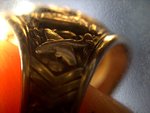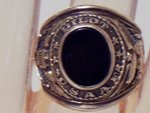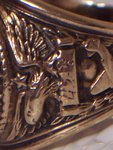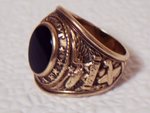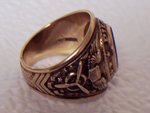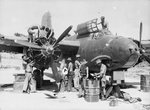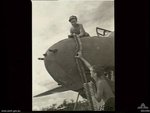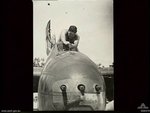FLYBOYJ
"THE GREAT GAZOO"
From Joe B's......
"Since the USAAF had no night fighter units when the USA entered World War 2, a night fighter training organization was established at Orlando, Florida. Most of the P-70 Nighthawk aircraft served there with the 481st Night Fighter Operational Training Group to develop tactics and procedures for radar-controlled night interceptions and to train the crews of nineteen night fighter squadrons. Very few of these P-70s ever went overseas, most remaining in the USA to be passed on to the next night fighter units that needed to be trained. Most units trained on the P-70 were reequipped with the Northrop P-61 Black Widow before they transferred overseas.
Only five night fighter squadrons were still equipped with P-70s at the time they were deployed overseas. Four P-70-trained night fighter squadrons were sent with their aircraft to North Africa in 1943 for service with the Twelfth Air Force. However, when they got there, these outfits used Bristol Beaufighter VIF fighters obtained from Britain under Reverse Lend-Lease. The 427th Night Figher Squadron took its P-70s with it when it deployed to Italy, but the squadron exchanged its P-70s for Northrop P-61 Black Widows before it became operational.
The P-70 actually saw some combat action in the Pacific Theatre, although their service there was quite brief. The 6th Night Fighter Squadron began operations in February of 1943 with its P-70s from Henderson Field, Guadalcanal, in an attempt to intercept high-flying Japanese night raiders. It was later supplanted by the 419th Night Fighter Squadron. The 418th and 421st Night Fighter Squadrons flew P-70s operationally in New Guinea for a brief time. The P-70 was not very successful in combat, scoring only two kills during the entire war. The P-70 lacked sufficient performance to intercept Japanese night raiders unless it was extremely fortunate. P-70s were replaced with P-61s just as soon as these aircraft would be made available."
Douglas P-70
"Since the USAAF had no night fighter units when the USA entered World War 2, a night fighter training organization was established at Orlando, Florida. Most of the P-70 Nighthawk aircraft served there with the 481st Night Fighter Operational Training Group to develop tactics and procedures for radar-controlled night interceptions and to train the crews of nineteen night fighter squadrons. Very few of these P-70s ever went overseas, most remaining in the USA to be passed on to the next night fighter units that needed to be trained. Most units trained on the P-70 were reequipped with the Northrop P-61 Black Widow before they transferred overseas.
Only five night fighter squadrons were still equipped with P-70s at the time they were deployed overseas. Four P-70-trained night fighter squadrons were sent with their aircraft to North Africa in 1943 for service with the Twelfth Air Force. However, when they got there, these outfits used Bristol Beaufighter VIF fighters obtained from Britain under Reverse Lend-Lease. The 427th Night Figher Squadron took its P-70s with it when it deployed to Italy, but the squadron exchanged its P-70s for Northrop P-61 Black Widows before it became operational.
The P-70 actually saw some combat action in the Pacific Theatre, although their service there was quite brief. The 6th Night Fighter Squadron began operations in February of 1943 with its P-70s from Henderson Field, Guadalcanal, in an attempt to intercept high-flying Japanese night raiders. It was later supplanted by the 419th Night Fighter Squadron. The 418th and 421st Night Fighter Squadrons flew P-70s operationally in New Guinea for a brief time. The P-70 was not very successful in combat, scoring only two kills during the entire war. The P-70 lacked sufficient performance to intercept Japanese night raiders unless it was extremely fortunate. P-70s were replaced with P-61s just as soon as these aircraft would be made available."
Douglas P-70

